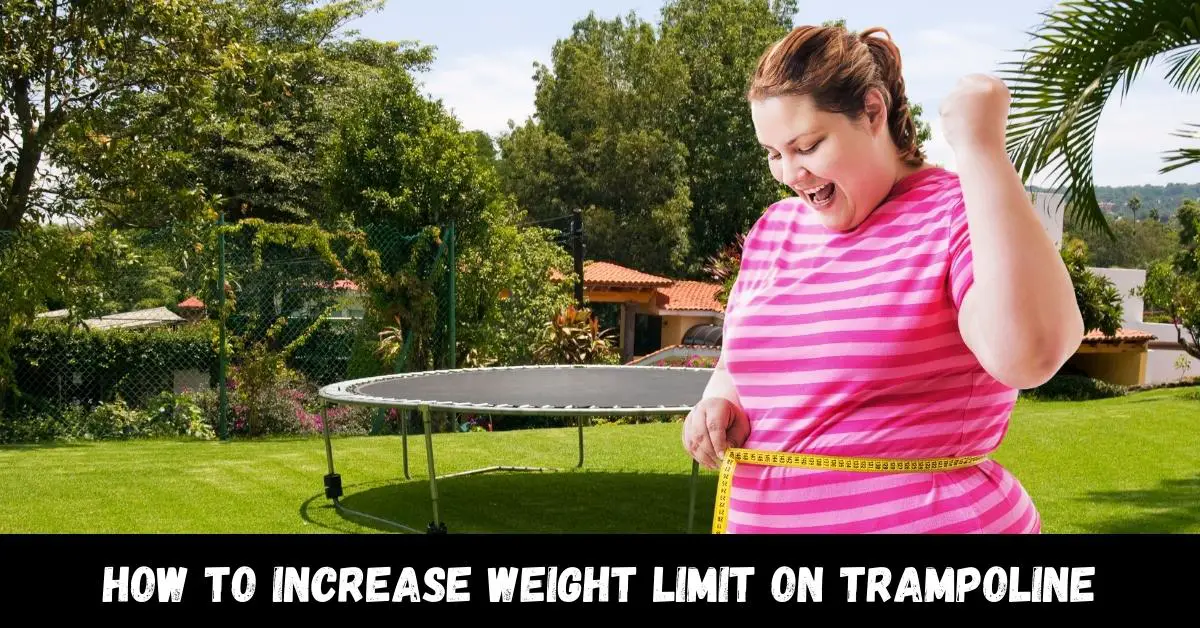Trampolines are an exhilarating source of fun and physical activity for both children and adults. However, many trampolines have weight limits that can restrict larger individuals from enjoying this bouncy experience.
If you find yourself facing this limitation, don’t despair! There are ways to increase the weight limit on a trampoline, ensuring that everyone can join in on the fun safely.
In this article, we will explore various techniques and modifications that can help boost the weight capacity of a trampoline. Firstly, we will delve into the importance of adhering to manufacturer guidelines and understanding the limits of your trampoline model.
Then, we will discuss the significance of sturdy construction and high-quality materials in increasing weight limits. We will also explore strategies such as adding additional springs, reinforcing the frame, and upgrading the trampoline mat.
By implementing these methods, you can enhance the weight capacity of your trampoline, accommodating heavier users without compromising safety.
Remember, it is crucial to prioritize safety and follow all guidelines to ensure a secure and enjoyable experience for everyone. So, let’s dive in and discover how to increase the weight limit on your trampoline!
How to increase weight limit on trampoline? If you’re looking to increase the weight limit on your trampoline, consider adding additional springs, reinforcing the frame, and upgrading the trampoline mat for enhanced stability and safety.
How To Increase Weight Limit on Trampoline?
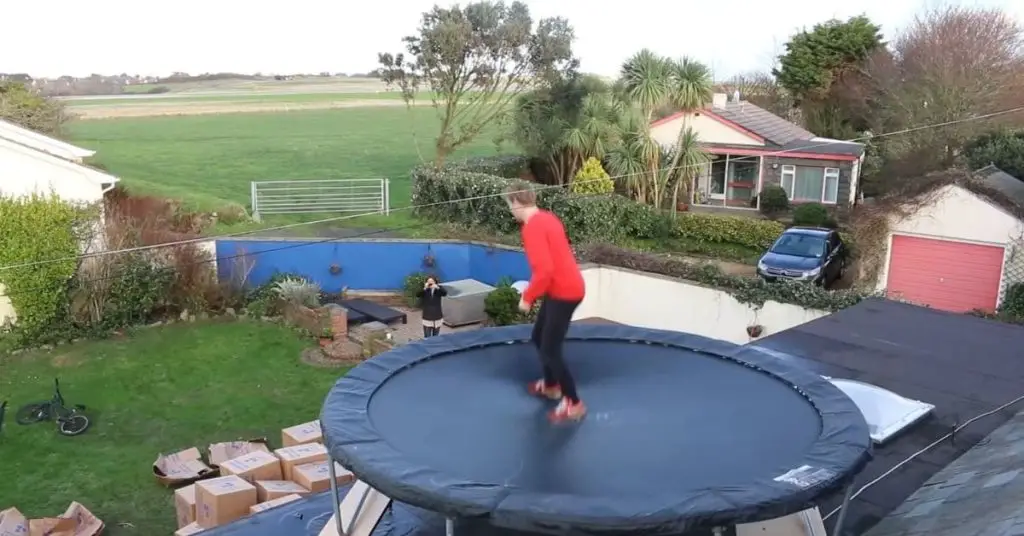
Increasing the weight limit on a trampoline can be a safety concern as trampolines are designed to support a specific maximum weight capacity.
Exceeding the weight limit can lead to structural damage and an increased risk of injuries. It’s important to prioritize safety and follow the manufacturer’s guidelines.
Understanding Trampoline Weight Limits
Trampolines are a popular recreational activity for people of all ages, providing a fun and engaging way to exercise and enjoy outdoor play. However, it is crucial to understand and adhere to trampoline weight limits to ensure safety and prevent accidents.
This article will explore the significance of trampoline weight limits and the factors influencing them.
Trampoline Weight Limits and Their Significance
Trampoline weight limits refer to the maximum weight capacity a trampoline can safely support. These limits are established by manufacturers based on various factors, including the design, construction, and materials used in the trampoline’s production.
It is essential to follow these weight limits to ensure the trampoline functions as intended and minimizes the risk of injuries.
The significance of trampoline weight limits lies in maintaining the structural integrity of the trampoline and preventing accidents. Exceeding the weight limit can stress the trampoline components excessively, leading to premature wear, and tear and potential failures.
This can result in injury to the users and damage to the trampoline itself. Adhering to the weight limits helps ensure a safe and enjoyable experience for everyone using the trampoline.
Factors Influencing Weight Limits
Several factors influence the weight limits of trampolines. Let’s explore each of these factors in detail:
Trampoline Design and Construction:
The design and construction of a trampoline play a significant role in determining its weight limit. Trampolines come in various shapes and sizes: round, rectangular, and oval.
Rectangular trampolines, for example, often have higher weight limits than round trampolines due to their structural design. The frame structure, support beams, and connection points are all crucial aspects that impact the weight limit.
Material Quality and Durability:
The quality and durability of materials used in trampoline construction directly affect its weight limit. High-quality steel frames, for instance, provide better strength and stability, allowing for higher weight capacities.
The choice of materials for the jumping mat, padding, and safety enclosure also contributes to the trampoline’s overall weight limit.
Springs or Bungee Cords:
The type and quality of springs or bungee cords used in a trampoline can significantly influence its weight limit. Springs provide bounce and support to the jumping mat, and their strength and quantity determine the weight capacity.
Similarly, trampolines that use bungee cords as an alternative to springs should have cords specifically designed to withstand the anticipated weight loads.
Mat Material and Stitching:
The material and stitching of the jumping mat are vital considerations when determining weight limits. The mat should be made of durable, UV-resistant material that can withstand the impact and stress of repeated jumping.
The stitching that attaches the mat to the springs or bungee cords should also be strong and reinforced to support the weight capacity.
Frame Strength and Stability:
The strength and stability of the trampoline frame are crucial factors in determining weight limits. A sturdy frame made from high-quality materials will provide better support and durability.
The frame should be securely connected and braced to prevent any wobbling or instability, especially when subjected to higher weight loads.
It is important to note that weight limits can vary across different trampoline models and brands. Manufacturers conduct rigorous testing and calculations to determine the appropriate weight limits for their trampolines.
These limits are typically provided in the trampoline’s user manual or prominently displayed on the product itself. It is essential to consult these guidelines and strictly adhere to them to ensure a safe and enjoyable trampoline experience.
Evaluating Existing Trampoline Weight Limit

Trampolines provide endless fun and entertainment for both children and adults. However, it is essential to evaluate a trampoline’s existing weight limit to ensure its users’ safety.
We will discuss the steps involved in evaluating the weight limit of a trampoline, including checking manufacturer specifications, determining the current weight limit, and understanding the limitations and risks associated with exceeding it.
Checking Manufacturer Specifications
The first step in evaluating the weight limit of a trampoline is to check the manufacturer’s specifications.
The manufacturer typically provides the weight limit in the trampoline’s user manual or on the product packaging. It is crucial to find this information to understand the maximum weight capacity the trampoline can safely support.
Manufacturer specifications often consider factors such as the trampoline’s design, materials used, and structural integrity. These specifications are based on extensive testing and analysis conducted by the manufacturer to determine the weight limit that ensures the trampoline’s safe operation.
Determining the Current Weight Limit of the Trampoline
After checking the manufacturer’s specifications, the next step is to determine the current weight limit of the trampoline. Over time, wear and tear, exposure to weather conditions, and other factors can affect a trampoline’s structural integrity, potentially reducing its weight capacity.
To determine the current weight limit, inspect the trampoline’s components. Check for any signs of damage or degradation, such as bent or rusted frames, torn or stretched jumping mats, weakened springs, or damaged safety enclosures.
These issues can compromise the trampoline’s overall strength and stability.
If you notice any damage or signs of wear, it is important to address them before using the trampoline. Contact the manufacturer or a professional trampoline repair service for guidance on necessary repairs or replacements.
Using a trampoline with compromised components can lead to safety hazards and increase the risk of accidents.
In some cases, the trampoline may have a visible weight limit label that indicates the current maximum weight capacity. However, it is crucial to note that the manufacturer’s specified weight limit should always precede any other indications.
Limitations and Risks Associated with Exceeding the Weight Limit
Exceeding the weight limit of a trampoline can have severe consequences. It stresses the trampoline’s components excessively, compromising their structural integrity and increasing the risk of accidents.
Understanding the limitations and risks associated with exceeding the weight limit is crucial for ensuring the safety of trampoline users.
When the weight limit is exceeded, the trampoline’s jumping mat, springs, or bungee cords, frame, and safety enclosure may experience excessive strain. This can lead to the failure of these components, resulting in injuries to the users or damage to the trampoline itself.
Additionally, an overloaded trampoline may become unstable and unsafe, increasing the chances of falls or collisions. The trampoline’s bounce performance may also be affected, leading to unpredictable and potentially dangerous movements.
Communicating and educating all trampoline users about the weight limit and its significance is important. Children should be made aware of the weight limit and understand that it should not be exceeded under any circumstances. Supervision by responsible adults is crucial to enforce these safety guidelines.
Upgrading Trampoline Components
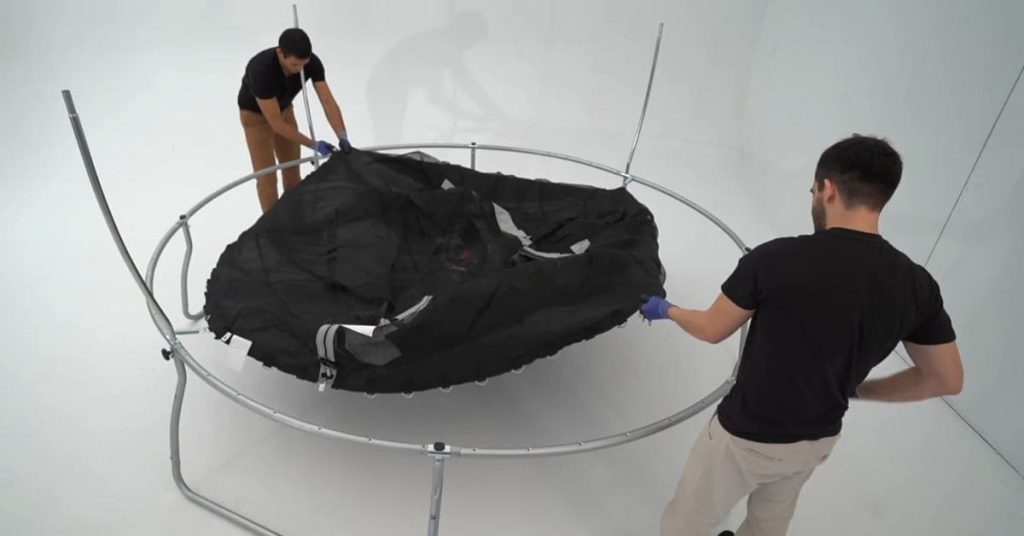
Trampolines are a fantastic source of fun and exercise, but the components may experience wear and tear as time goes on.
Upgrading trampoline components can help improve safety, extend the lifespan of the equipment, and enhance the overall trampoline experience.
We will explore the process of upgrading trampoline components, including reinforcing the frame, upgrading springs or bungee cords, and enhancing the trampoline mat.
Choosing a Stronger Frame Material
One way to upgrade a trampoline is by reinforcing the frame. The frame is the backbone of the trampoline and plays a critical role in supporting the weight of the users. Upgrading to a stronger frame material can enhance durability and increase weight capacity.
Traditional trampoline frames are commonly made of galvanized steel, which offers good strength and rust resistance. However, consider materials like heavy-duty galvanized or powder-coated steel if you want an upgrade.
These materials provide additional strength, better resistance to corrosion, and increased longevity.
Adding Additional Support Beams
Another way to reinforce the frame is by adding extra support beams. Support beams are horizontal or diagonal bars that connect different parts of the trampoline frame, providing additional stability.
By installing extra support beams, you can distribute the weight more evenly and enhance the trampoline’s overall structural integrity.
Consult the trampoline manufacturer or a professional for guidance on where and how to add support beams. They will help you determine the optimal placement and design based on the specific trampoline model.
Upgrading Springs or Bungee Cords
Springs are crucial components of trampolines that provide the bounce effect. Over time, springs can lose their tension, affecting the trampoline’s performance and weight capacity.
Upgrading to heavier-duty springs or longer springs can help restore or increase the trampoline’s bounce and weight capacity.
Heavier-duty springs are typically made from thicker gauge steel, offering increased strength and durability. They can withstand higher weight loads and provide a more robust bounce.
Longer springs can also help increase the trampoline’s bounce height and weight capacity by providing greater elasticity.
Choosing springs specifically designed for your trampoline model is essential when replacing springs. Consult the manufacturer’s guidelines or seek advice from a professional to ensure compatibility and optimal performance.
Considering Alternative Bungee Cord Options
Some trampolines use bungee cords instead of springs. Bungee cords offer a different type of bounce and can provide a safer and quieter jumping experience.
If your trampoline uses bungee cords and you’re considering an upgrade, explore alternative bungee cord options with higher weight capacities or increased durability.
Upgrading to stronger or thicker bungee cords can enhance the trampoline’s weight limit and longevity. Look for bungee cords specifically designed for trampolines, ensuring they are compatible with your trampoline’s design and dimensions.
Enhancing the Trampoline Mat
The trampoline mat is a crucial component that directly affects your trampoline’s performance, safety, and longevity. Upgrading the trampoline mat can significantly enhance the overall trampolining experience. Here are two ways to enhance the trampoline mat:
Selecting a More Durable and Higher Weight Capacity Mat
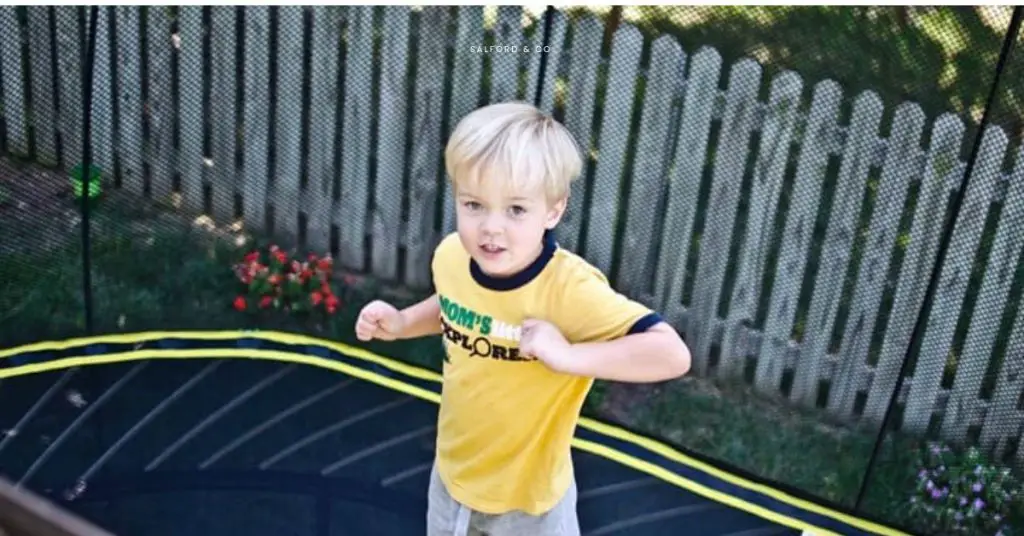
When upgrading the trampoline mat, selecting a mat that is more durable and has a higher weight capacity is essential.
The mat should be able to withstand the impact of jumping, resist wear and tear, and accommodate the weight of the users.
Consider the following factors when choosing a new trampoline mat:
Material Quality: Look for mats made from durable materials such as polypropylene (PP) or polyethylene (PE). These materials offer excellent strength, flexibility, and resistance to UV rays and weathering.
They are specifically designed to endure repetitive jumping and exposure to outdoor elements, ensuring long-lasting performance.
Weight Capacity: Check the manufacturer’s specifications to determine the maximum weight capacity of your trampoline. Choose a mat with a weight capacity that meets or exceeds your requirements.
A higher weight capacity ensures the mat can safely support multiple users and reduce the risk of damage or failure.
UV Resistance: Outdoor trampolines are exposed to sunlight, which can cause fading and degradation of the mat over time. Look for mats with UV-resistant properties to prevent color fading and maintain the mat’s durability.
Ensuring Proper Stitching and Reinforcement
The stitching and reinforcement of the trampoline mat are critical for its structural integrity, stability, and safety. Proper stitching and reinforcement help prevent tears, ensure even weight distribution, and maintain the mat’s overall strength.
Consider the following aspects when assessing the stitching and reinforcement of the trampoline mat:
Stitching Quality: Examine the stitching on the mat to ensure it is tight, uniform, and securely attached. High-quality stitching is crucial to withstand the impact of jumping and prevent unraveling or separation.
Reinforced stitching around the edges and attachment points is particularly important, as these areas experience the most tension.
Perimeter Bands: Some trampoline mats come with reinforced perimeter bands and thicker bands around the edges. These bands provide additional support, distribute weight evenly, and reduce strain on individual stitching points.
Consider mats with reinforced perimeter bands for enhanced durability and safety.
Proper Installation: When replacing the trampoline mat, ensure it is properly installed and securely attached to the frame. Follow the manufacturer’s instructions or seek professional assistance if needed.
Proper installation guarantees that the weight is evenly distributed, preventing undue stress on specific areas of the mat.
Regularly inspect the trampoline mat for signs of wear, tears, or loose stitching. Promptly address any issues by repairing or replacing the mat as necessary. Regular maintenance and care will help prolong the life of the trampoline mat and ensure continued safety and performance.
Proper Trampoline Maintenance
Maintaining your trampoline is crucial for its longevity, safety, and performance. Regular inspections, cleaning, and protection from the elements are essential to proper trampoline maintenance. Here are some guidelines to help you keep your trampoline in optimal condition:
Regular Inspections and Maintenance Routines
Regular inspections are vital for identifying any potential issues with the trampoline and addressing them promptly. Follow these maintenance routines to ensure the ongoing safety and functionality of your trampoline:
Frame Inspection: Regularly inspect the trampoline frame for signs of wear, rust, or structural damage. Check for any bent or broken components, loose joints, or missing bolts. If you notice any issues, repair or replace the affected parts immediately.
Mat Inspection: Examine the trampoline mat for tears, holes, or loose stitching. Pay close attention to the attachment points and edges, as they often experience the most stress. If you detect any damage, consider repairing or replacing the mat to maintain optimal safety and performance.
Spring or Bungee Cord Inspection: Inspect the springs or bungee cords to ensure they are securely attached and in good condition. Look for signs of stretching, rust, or deformation. Replace any damaged or worn-out springs or cords promptly to prevent accidents and maintain bounce quality.
Safety Enclosure Inspection: If your trampoline is equipped with a safety enclosure, inspect it regularly. Check for any tears or holes in the netting and ensure that the poles and attachment points are secure. A well-maintained safety enclosure adds an extra layer of protection for trampoline users.
Cleaning and Removing Debris from the Trampoline
Regular cleaning is essential to free your trampoline from dirt, leaves, and other debris. Follow these steps to clean your trampoline effectively:
Clear the Area: Before cleaning, remove any objects or debris around the trampoline that may fall onto it during the cleaning process.
Sweep or Brush the Mat: Use a soft-bristle broom or brush to remove dirt, leaves, or other loose debris from the trampoline mat. Start from the center and work your way outward.
Hose Down the Mat: Use a garden hose with a gentle spray attachment to rinse the trampoline mat. This will help remove any remaining dirt or debris and keep the mat clean.
Clean the Frame and Springs: Wipe down the frame and springs with a damp cloth to remove any dirt or grime. Dry them thoroughly to prevent rust or corrosion.
Avoiding Excessive UV Exposure and Extreme Weather Conditions

Protecting your trampoline from excessive UV exposure and extreme weather conditions can significantly extend its lifespan. Here’s how to safeguard your trampoline:
UV Protection: Prolonged exposure to sunlight can cause the mat and other components to fade, weaken, or deteriorate. Position the trampoline in a shaded area or use a trampoline cover to reduce UV exposure. This will help preserve the trampoline’s integrity and appearance.
Extreme Weather Precautions: During severe weather conditions such as storms, high winds, or heavy snowfall, it is advisable to disassemble and store the trampoline in a safe location.
If disassembly is impossible, securely anchor the trampoline to the ground using appropriate anchoring systems to prevent it from being blown away.
Seasonal Storage: If you live in an area with harsh winters or extended periods of inclement weather, consider disassembling and storing the trampoline during the off-season. This will protect it from extreme weather conditions and increase its lifespan.
By following these maintenance practices, you can ensure your trampoline’s safety, longevity, and optimal performance. Regular inspections, cleaning, and protection from the elements are essential for maintaining a safe and enjoyable trampoline experience for years to come.
Remember to always refer to the manufacturer’s guidelines and recommendations for specific maintenance instructions tailored to your trampoline model. They may provide additional tips and precautions that are specific to your trampoline’s design and materials.
Seeking Professional Assistance
Regarding trampolines, seeking professional assistance can provide valuable expertise, guidance, and services to ensure optimal safety, performance, and enjoyment. Here are three ways to seek professional assistance for your trampoline:
Consulting Trampoline Experts or Manufacturers
Trampoline experts and manufacturers have in-depth knowledge and experience regarding trampoline design, safety standards, and maintenance. Consulting them can provide valuable insights and guidance for your specific trampoline needs.
Here’s how you can benefit from their expertise:
Safety Recommendations: Trampoline experts can provide up-to-date safety recommendations based on industry standards and best practices. They can advise you on weight limits, user guidelines, safety accessories, and other precautions to ensure a safe trampoline experience.
Maintenance Advice: Trampoline manufacturers can offer guidance on proper maintenance routines and procedures specific to their trampoline models.
They can advise you on inspection techniques, cleaning methods, and any specific maintenance requirements to keep your trampoline in optimal condition.
Troubleshooting: If you encounter any issues or concerns with your trampoline, consulting experts or manufacturers can help identify the problem and provide troubleshooting advice. They can guide you through potential solutions or recommend appropriate steps for repair or replacement.
Hiring Professional Trampoline Installers or Technicians
When setting up or assembling a trampoline, hiring professional trampoline installers or technicians can ensure proper installation and minimize the risk of errors or safety hazards. Here’s how they can assist you:
Expert Installation: Professional installers have the knowledge and experience to assemble trampolines correctly, following manufacturer specifications and safety guidelines. They can ensure that all components are securely in place, reducing the risk of structural issues or accidents.
Anchoring and Leveling: Trampoline installers can properly anchor the trampoline to the ground, ensuring stability and preventing the trampoline from tipping over during use. They can also ensure the trampoline is leveled to provide an even and safe bouncing surface.
Safety Enclosure Installation: If your trampoline includes a safety enclosure, professional installers can expertly install it, ensuring it is securely attached and properly tensioned. This helps prevent users from falling off the trampoline and adds an extra layer of safety.
Trampoline Modification or Customization Options
If you have specific customization needs or want to modify your trampoline for improved performance or safety, seeking professional assistance can be beneficial. Consider the following options:
Customized Accessories: Trampoline professionals can guide in selecting and installing customized accessories such as safety pads, weather covers, or ladder attachments. These accessories can enhance safety, protection, and convenience during trampoline use.
Upgrades and Modifications: Professionals can assist in upgrading specific trampoline components to enhance performance and safety. For example, they can help you choose and install stronger springs, reinforced frames, or higher-weight capacity mats.
Repairs and Maintenance Services: Professionals can provide these services if your trampoline requires repairs or maintenance beyond your capabilities. They can fix damaged frames, replace worn-out parts, or repair tears in the mat or safety enclosure.
When seeking professional assistance, ensure you choose reputable and experienced individuals or companies. Look for certified installers, technicians, or trampoline specialists with a proven trampoline safety and maintenance track record.
By seeking professional assistance, you can benefit from their expertise, ensure proper installation and maintenance, and explore customization options tailored to your trampoline. This will enhance the overall safety, performance, and enjoyment of your trampoline experience.
What is the weight limit for a trampoline Park?

Make sure you meet the height and weight rules: you need to be 46 inches or taller and weigh no more than 250 pounds (between 18 and 113 kilograms).
The trampoline weight limit is 400 lbs.
When it comes to choosing a round trampoline for 2 to 3 people with a weight limit of 400 lbs, it’s important to consider a few factors. Here are a few recommendations:
Size: For 2 to 3 people, a trampoline with a diameter of 12 to 14 feet would be suitable. This size provides enough space for multiple users to jump comfortably.
Weight limit: Since the limit is 400 lbs, selecting a trampoline that can accommodate this capacity is crucial. Look for models specifically designed for higher weight limits to ensure safety and durability.
Safety features: Safety should be a top priority, so consider trampolines that come with safety enclosures, padded frames, and strong, durable materials. Look for trampolines with a safety net enclosure system to prevent users from falling off the trampoline while jumping.
Durability: Trampolines built with high-quality materials, such as galvanized steel frames and UV-resistant jumping mats, are more durable and long-lasting.
Brand: Skywalker Trampolines: Skywalker Trampolines is a well-known brand that offers a range of trampolines in different sizes and weight capacities. They have models specifically designed for higher weight limits, including options suitable for 2 to 3 people.
JumpSport: JumpSport is another trusted brand that produces high-quality trampolines. They offer various models with excellent safety features and weight capacities suitable for multiple users.
It’s always a good idea to consult the specific product specifications and guidelines provided by the manufacturer to ensure that the trampoline meets your weight capacity and safety requirements.
The trampoline weight limit is 500
When searching for a trampoline suitable for 2 to 3 people with a weight limit of 500 lbs, one of the top options available is the AlleyOOP Sports VariableBounce Trampoline.
It is known for its durability, safety features, and high weight capacity. Here are some key features of the AlleyOOP Sports VariableBounce Trampoline:
Weight Capacity: The AlleyOOP Sports VariableBounce Trampoline has a weight limit of up to 500 lbs, making it ideal for accommodating multiple users.
VariableBounce Technology: This trampoline incorporates patented VariableBounce technology, which provides a smooth and controlled bounce. This feature helps reduce the risk of injuries by minimizing the impact on joints.
Sturdy Construction: The AlleyOOP Sports trampolines are built with heavy-duty materials and a robust frame, ensuring durability and stability even with heavier loads.
Safety Enclosure: The trampoline has a high-quality safety enclosure surrounding the jumping area. It features a secure entry system to prevent accidental falls.
Quality Components: AlleyOOP Sports uses top-grade materials for their trampolines, including weather-resistant springs, thick safety pads, and UV-resistant jumping mats, ensuring long-lasting performance.
Warranty: The trampoline is backed by a generous warranty, demonstrating the manufacturer’s confidence in its quality and durability.
Remember to always follow the safety guidelines provided by the manufacturer and supervise the use of the trampoline to ensure a safe and enjoyable experience for everyone.
Trampoline 800 lb weight limit

One of the top trampolines available for 4 to 5 people with a weight limit of 800 lbs is the Acon Air 16 Sport Trampoline. Here are the key features that make it a great choice:
Weight Capacity: The Acon Air 16 Sport Trampoline has a weight limit of up to 800 lbs, providing ample support for 4 to 5 people to jump simultaneously.
Large Size: With a diameter of 16 feet, this trampoline offers plenty of jumping space for multiple users to enjoy simultaneously.
Heavy-Duty Construction: The Acon Air 16 Sport Trampoline is built with high-quality materials, including a galvanized steel frame and thick springs, ensuring durability and stability even with heavier loads.
Enhanced Safety: The trampoline has a safety enclosure net that is securely attached to the jumping mat, preventing users from accidentally falling off. The net is made of strong and durable materials, providing additional safety during use.
Spring System: The trampoline utilizes a heavy-duty spring system that offers excellent bounce and responsiveness, allowing users to enjoy a fun and energetic jumping experience.
Warranty: Acon provides a generous warranty for its trampolines, reflecting its commitment to quality and customer satisfaction.
Always ensure that the trampoline is set up and used according to the manufacturer’s guidelines and safety recommendations to promote a safe and enjoyable experience for everyone.
Trampoline 1000 lb weight limit
When searching for a trampoline that can accommodate 6 to 7 people with a weight limit of 1000 lbs, one of the top options available is the Acon Air 16 Sport HD Trampoline. Here are the key features that make it a great choice:
Weight Capacity: The Acon Air 16 Sport HD Trampoline has a weight limit of up to 1000 lbs, making it suitable for larger groups of 6 to 7 people.
Large Size: With a diameter of 16 feet, this trampoline offers a spacious jumping surface that can comfortably accommodate multiple users simultaneously.
Heavy-Duty Construction: The Acon Air 16 Sport HD Trampoline is built with high-quality materials and a robust frame, ensuring durability and stability even with heavier loads and intense use.
Enhanced Safety: The trampoline has a safety enclosure net that surrounds the jumping area, providing added protection and preventing users from accidentally falling off. The net is made of strong and durable materials to ensure safety during use.
HD Performance Springs: This trampoline features high-performance springs designed to provide excellent bounce and responsiveness, offering an enjoyable jumping experience for all users.
Warranty: Acon offers a generous warranty for their trampolines, showcasing their confidence in the product’s quality and performance.
Always follow the manufacturer’s guidelines for setup, use, and safety precautions to ensure a safe and enjoyable experience for all users on the trampoline.
Propel trampoline weight limit
The weight limit for Propel trampolines can vary depending on the specific model. Propel offers a range of trampolines with different weight capacities to accommodate various user needs.
Typically, Propel trampolines have weight limits that range from around 200 lbs to 250 lbs for smaller models, and larger models may have weight limits up to 300 lbs or more.
To determine the exact weight limit for a specific Propel trampoline model, it’s best to refer to the product specifications provided by the manufacturer. The weight limit is important to ensure the trampoline can safely support the intended users.
Be sure to check the documentation or contact Propel directly for the precise weight limit of the trampoline you are interested in.
Skywalker trampoline weight limit
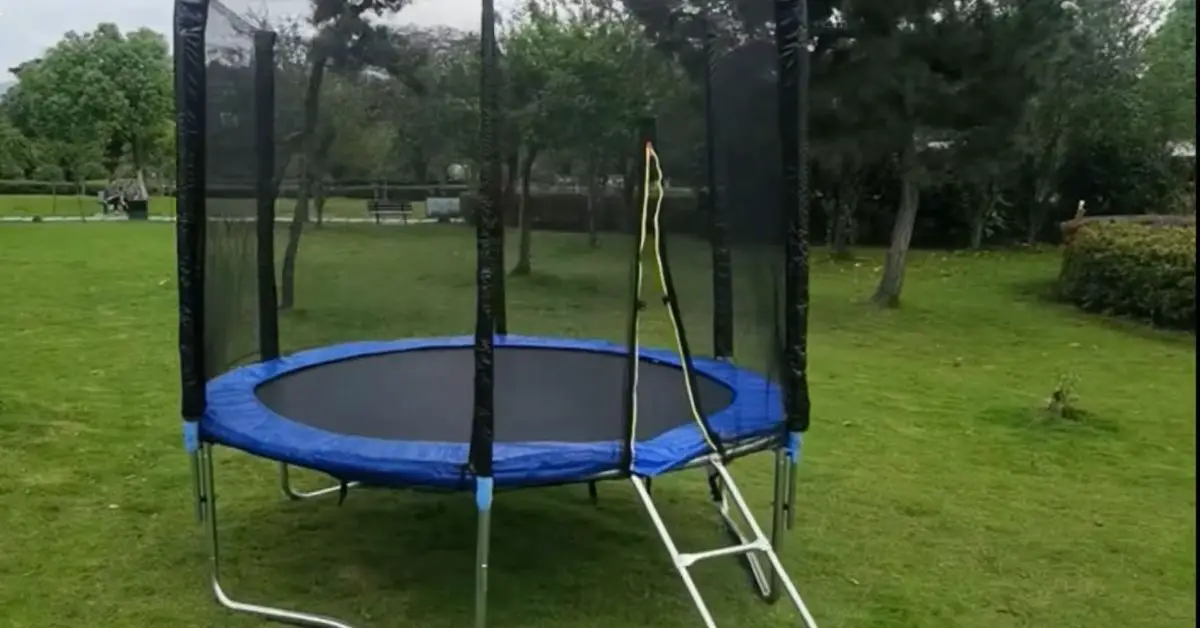
Skywalker trampolines typically have weight limits that vary based on the specific model and size.
However, most Skywalker trampolines have weight limits ranging from approximately 175 lbs to 250 lbs for smaller models designed for children, and larger models can have weight limits up to 250 lbs to 300 lbs or more.
To determine the exact weight limit for a specific Skywalker trampoline model, it’s best to refer to the product specifications provided by the manufacturer. The weight limit is an important factor to consider for the safety and durability of the trampoline.
Checking the documentation or contacting Skywalker directly will provide you with the accurate weight limit for the trampoline you are interested in.
10-foot trampoline weight limit
The weight limit for a 10-foot trampoline can vary depending on the specific brand and model. In general, most 10-foot trampolines have weight limits that range from approximately 200 lbs to 250 lbs.
However, it’s important to note that weight limits can vary between different trampoline manufacturers and models within the same size category.
To determine the precise weight limit for a specific 10-foot trampoline, it’s best to refer to the product specifications provided by the manufacturer or consult the documentation accompanying the trampoline.
Adhering to the weight limit is crucial for ensuring the safety and longevity of the trampoline, as exceeding the weight capacity may put unnecessary stress on the trampoline’s components and increase the risk of accidents or damage.
12-foot trampoline weight limit
The weight limit for a 12-foot trampoline can vary depending on the specific brand and model. However, most 12-foot trampolines have weight limits that range from approximately 250 lbs to 300 lbs.
It’s important to note that weight limits can differ between different trampoline manufacturers and models within the same size category.
To determine the precise weight limit for a specific 12-foot trampoline, it’s best to refer to the product specifications provided by the manufacturer or consult the documentation accompanying the trampoline.
Adhering to the weight limit is crucial for ensuring the safety and durability of the trampoline. Exceeding the weight capacity may put undue stress on the trampoline’s components, potentially leading to accidents or damage.
It is always recommended to follow the manufacturer’s guidelines and safety instructions when using a trampoline.
FAQs About How To Increase Weight Limit on Trampoline
Q.1 What happens if you exceed the weight limit on the trampoline
Exceeding the weight limit on a trampoline can pose serious safety risks. It can lead to excessive strain on the trampoline’s frame, springs, and mat, potentially causing structural damage or even accidents.
The weight limit on trampolines is put in place to ensure the optimal performance and durability of the equipment, as well as to minimize the risk of injuries.
Q.2 Do weight limit on trampoline matter
Weight limits on trampolines do matter and should be respected. They are determined by manufacturers based on factors such as the trampoline’s design, materials used, and engineering specifications.
Adhering to the weight limit ensures that the trampoline functions as intended, maintaining proper bounce, stability, and overall safety.
Q.3 How accurate are trampoline weight limits
While trampoline weight limits are generally accurate, it is essential to remember that they are manufacturer-provided guidelines. Factors such as the trampoline’s age, condition, and environmental factors can influence its performance.
It is always recommended to follow the weight limit specified by the manufacturer and use common sense to prioritize safety when using a trampoline.
Q.4 Is it safe to exceed the weight limit on a trampoline?
Exceeding the weight limit on a trampoline can be unsafe and increase the risk of accidents or structural damage. It is crucial to respect the weight limit for optimal performance and safety.
Q.5 Can I modify my trampoline to increase its weight limit?
Modifying a trampoline to increase its weight limit is not recommended. Trampolines are designed with specific weight capacities, and altering them can compromise their structural integrity and safety.
Conclusion:
In conclusion, increasing the weight limit on a trampoline requires a thorough understanding of trampoline weight limits and the factors that influence them.
Trampoline design and construction play crucial roles in determining weight limits, including material quality, durability, springs or bungee cords, mat material, stitching, and frame strength and stability.
To increase the weight limit, it is important to evaluate the existing trampoline’s specifications and determine its current weight limit. However, it is essential to be aware of the limitations and risks associated with exceeding the weight limit, as it may compromise safety.
Upgrading trampoline components, such as choosing a stronger frame material, adding additional support beams, upgrading springs or bungee cords, and enhancing the trampoline mat with higher weight capacity and proper stitching, can help increase the weight limit.
Proper trampoline maintenance, regular inspections, cleaning, and avoiding excessive UV exposure and extreme weather conditions are also important.
Seeking professional assistance from trampoline experts or manufacturers and considering trampoline modification or customization options can provide further guidance in increasing the weight limit.
By reading this detailed guide on How To Increase Weight Limit on Trampoline, we hope you now understand the topic well. If you have any questions, please feel free to ask in the comments section below!

